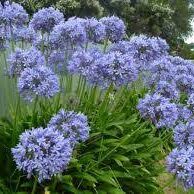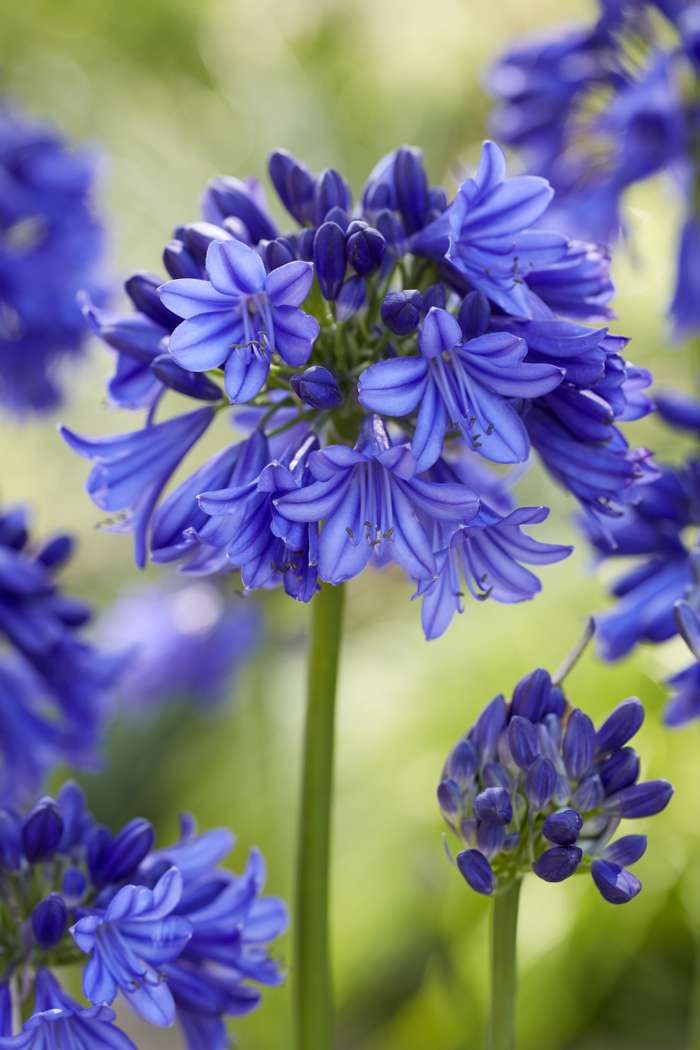Typical Agapanthus Issues and How to Solve Them
Typical Agapanthus Issues and How to Solve Them
Blog Article
Unleashing the Secret to Effective Agapanthus Farming: Advice for a Flourishing Yard
In the realm of horticulture, cultivating agapanthus successfully calls for a calculated approach that encompasses various elements of plant treatment. By recognizing the nuances of agapanthus growing, one can develop an environment where these plants grow and bloom perfectly.
Growing Agapanthus: Best Practices
When growing Agapanthus, proper soil preparation is important for making certain successful development and advancement of these attractive flowers. Agapanthus, commonly called Lily of the Nile or African lily, thrives in well-draining soil with a slightly acidic to neutral pH level - Agapanthus. Before planting, it is vital to modify hefty clay dirts with organic issue such as compost or peat moss to enhance drain and supply crucial nutrients for the plants
To grow Agapanthus, select an area that gets complete sunlight to partial shade, as this will advertise healthy and balanced development and bountiful blooming. Dig a hole twice the diameter of the plant's origin round and put the Agapanthus at the very same deepness it was previously growing. Delicately backfill the opening with soil, pressing down securely to get rid of any type of air pockets around the origins.
Water the freshly grown Agapanthus extensively and remain to keep the soil evenly wet, especially throughout the plant's energetic expanding period. Agapanthus. Applying a balanced fertilizer once a month can further sustain the plant's growth and flowering. By complying with these finest methods for planting Agapanthus, you can develop a stunning display screen of these captivating blossoms in your yard
Suitable Soil Issues for Agapanthus
For ideal growth and growing success of Agapanthus plants, guaranteeing the dirt conditions are ideal is essential. Agapanthus prefers dirt that is rich in nutrients, so integrating a well balanced fertilizer throughout the growing season can promote healthy and balanced growth and vibrant blossoms.

Watering and Fertilizing Tips
To make certain healthy growth and vivid blossoms, proper watering and feeding strategies are necessary for successful Agapanthus cultivation. Agapanthus plants benefit from routine watering, especially throughout the growing period.
When it concerns fertilizing Agapanthus, a well balanced plant food with equivalent parts nitrogen, phosphorus, and potassium can be used in the springtime to promote healthy and balanced growth and flowering. Slow-release plant foods are optimal for offering nutrients progressively over a prolonged period. Stay clear of over-fertilizing, as this can lead to too much foliage growth at the expense of flowers.
Additionally, including organic matter like compost right into the dirt can improve nutrient levels and boost soil framework, helping in the overall health and wellness of the Agapanthus plants. By adhering to these watering and fertilizing pointers, garden enthusiasts can ensure their Agapanthus plants thrive and produce stunning display screens of flowers.
Pruning and Deadheading Strategies
Proper trimming and deadheading techniques play a critical function in keeping the health and aesthetics of Agapanthus plants, matching the important techniques of watering and fertilizing for successful farming. Pruning Agapanthus includes getting rid of spent blossom heads, dead or yellowing fallen leaves, and overall shaping of the plant to advertise better development. Deadheading, the process of eliminating discolored flowers, not just boosts the plant's appearance but likewise urges further sites growing.
When deadheading Agapanthus, it is recommended to trim off the flower stem at the base utilizing sharp, tidy shears. This process redirects the plant's power from seed manufacturing back right into origin and vegetation growth, promoting a much healthier and more durable plant. Regular deadheading can prolong the growing duration of Agapanthus and avoid self-seeding, which can cause congestion.
In terms of pruning, Agapanthus normally take advantage of a light trim after flowering to clean up the plant and motivate fresh growth. Reducing the invested blossom stems and getting rid of any kind of broken or dead foliage helps maintain the plant's vitality and total appearance. However, it is important to stay clear of reducing into the crown of the plant, like it as this can deteriorate its wellness.

Protecting Agapanthus From Vermins and Diseases
Executing reliable bug and disease monitoring approaches is critical to securing the health and wellness and vitality of Agapanthus plants in farming. Agapanthus are normally hardy plants, however they can still succumb to various parasites and conditions if not effectively taken care of. One usual bug that affects Agapanthus is the Agapanthus borer, a caterpillar that tunnels into the plant, causing damages to the leaves and blossoms. To stop invasions, routine evaluation of the plants is essential. If borers are identified, they can be by hand gotten rid of, or insecticidal soap can be utilized as a control measure.
In enhancement to pests, Agapanthus are vulnerable to conditions such as root rot and fungal leaf areas. These concerns can typically be protected against by guaranteeing correct drain and staying clear of overwatering. If signs of illness show up, influenced parts of the plant ought to be without delay eliminated to avoid further spread. Fungicides may also be utilized as a treatment procedure, adhering to the supplier's instructions very carefully. By remaining cautious and addressing pest and disease issues quickly, gardeners can assist their Agapanthus prosper and grow.

Final Thought
To conclude, successful farming of agapanthus requires correct planting methods, ideal dirt problems, ample watering and feeding, regular trimming and deadheading, and security from conditions and pests. By complying with these methods and ideas, garden enthusiasts can make sure a prospering yard full of lovely agapanthus blooms. Agapanthus. Bear in mind to keep regular treatment and interest to detail to advertise the wellness and longevity of these magnificent plants
When planting Agapanthus, correct dirt prep work is necessary for guaranteeing effective growth and official statement development of these stunning blossoms.Water the newly grown Agapanthus thoroughly and continue to keep the soil equally wet, specifically throughout the plant's energetic expanding period.For optimum development and blooming success of Agapanthus plants, ensuring the soil problems are excellent is important. When hair transplanting or growing Agapanthus, make sure the dirt is well-prepared to supply the necessary structure for the plants to establish themselves successfully. One common bug that affects Agapanthus is the Agapanthus borer, a caterpillar that tunnels into the plant, triggering damages to the fallen leaves and flowers.
Report this page